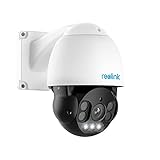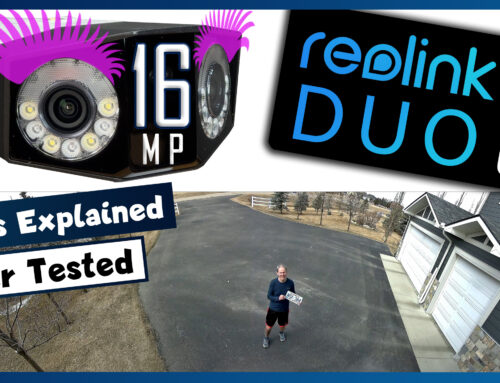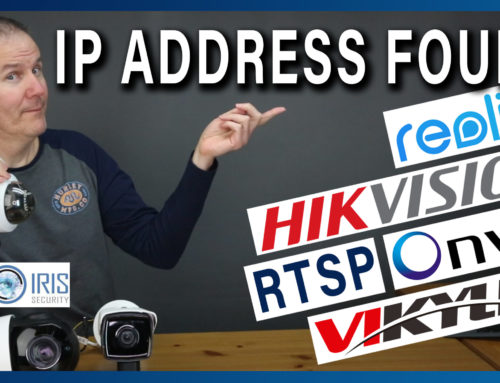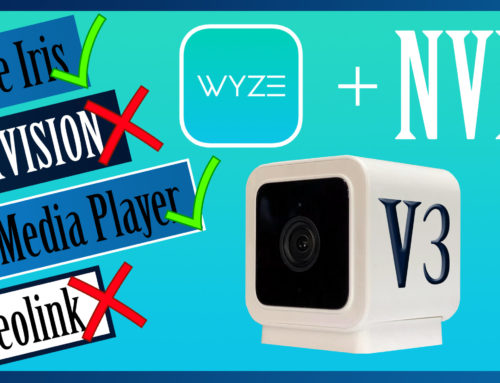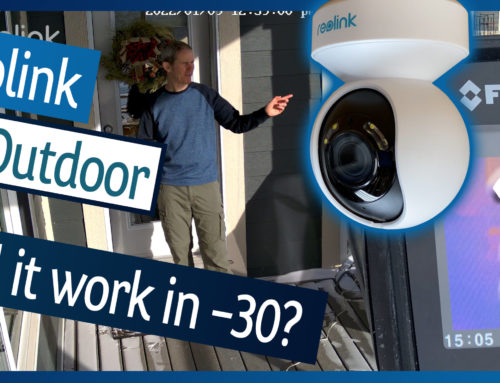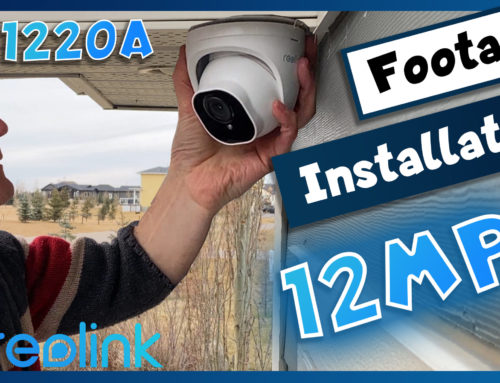Hey Guys,
Today we are updating the firmware on my Reolink IP security cameras. Some are LAN or network cameras, some are directly connected to the Reolink NVR and some are network cameras recording on the NVR. We’ll drive into these scenarios and the various user interfaces to get the cameras updated. This is a step-by-step video, with lots of detail and important information on this process.
REOLINK 4K PoE Security Camera System, Dome Surveillance IP Camera with 2.8 mm, 94° FoV, 3X Optical Zoom & 25FPS Video, Indoor Outdoor Home Security Camera, Human/Vehicle/Pet Detection, RLC-822A
Let’s get rolling with this first scenario, I have my camera located here and it’s plugged into my PoE switch in my basement. The switch is connected to my modem/router combo which gives the camera an IP address and access to my network and the internet. I also have a PC connected to the network. To perform the firmware update on the camera, I have 3 options. I can use the camera’s own internal web user interface over my PC. I can use the PC Reolink app, again on my PC or I can use the Reolink app on my mobile device. Well maybe. Some of Reolink cameras firmware have that option, like this one. And some do not. (point)
I have also noted that in some cameras there is an option in the firmware to “Auto Upgrade” the devices but that feature didn’t seem to be functioning as expected… hence the need for this video.
So, before we start the upgrade, I would like to know if I need to do the update. I want to know the currently install firmware version on my camera and what the latest version available is.
Reolink PTZ PoE Security Camera 4MP HD 190ft Night Vision Motion Alert Outdoor Wide Angle Waterproof Free Apps RLC-423
(as of April 27, 2024 23:00 GMT -06:00 - More infoProduct prices and availability are accurate as of the date/time indicated and are subject to change. Any price and availability information displayed on [relevant Amazon Site(s), as applicable] at the time of purchase will apply to the purchase of this product.)If any of these interfaces, like in this other camera example here, you have the ability to check for updates. Be cautious. This option might just work for major upgrades. I have 3.1.0.764 installed on this camera and when I go to upgrade, it says I have the latest installed. But now when I look at the Reolink site, the latest version is 3.1.0.861.
So, I’m not going to consider using that feature and we’ll continue to perform the firmware updates manually.
So back to the backyard camera, let’s verify the latest firmware version available. Go to the Reolink site and make you way over to the Download Center. Here I will enter the product of “IP Camera” and find the model number then select the Hardware version. This camera is a couple years old and has been discontinued but thankfully, Reolink is still providing the option to download the latest version of its firmware. So, it looks like I am due for an update, so we’ll get this downloaded. By the way, older or previous versions are not available for download. Now that the file is downloaded, let’s move it to a folder on my desktop for quicker access. There are 2 ways to perform the manual update; over the web user interface or the Reolink PC app.
- In the web UI here, navigate to Settings – Maintenance. Click browse and find the pak file. Since I don’t want to reset the configuration or return the camera to factory defaults, I will deselect these checkboxes. Now click “Upgrade”. I’m not going to actually do the upgrade here but rather using the PC app.
- The process here is almost identical. Go to Settings, System and Maintenance. Select the file and uncheck the box. I’ll press the “Upgrade” button and confirm. Now we’ll fast forward the update which only takes 2 minutes.
It seems the update is done, now it’s time to verify. The old version was v2.0.0.654 and the currently installed version is 3.0.0.142. I call that a success.
REOLINK 4K PoE Home Security Camera, IP Camera with 128 Degree, 2.8mm Lens, 5X Optical Zoom & IK10 Vandalproof for Outdoor Surveillance, Human/Vehicle/Pet Detection, No PT Supported, RLC-842A
$116.99Ok, so now it’s time for the second scenario where we have cameras attached to the NVR directly and a camera connected to the recorder over the network. You may remember these 4 cameras from an install video I did about a year ago right outside my front door. Right off the bat, we cannot update these directly connected cameras’ firmware over the web UI, PC App or mobile app. Here is the PC app, for example, These are the cameras recording on the NVR and when I look at the setting, I can update the NVR’s firmware and see the NVR’s firmware version, but I cannot configure or update any camera that is connected. The only way to achieve this is to use the built-in operating system on the NVR.
Let’s bring up the menu and look at the connected cameras. Channels 1-4 are plugged directly into the NVR. We’ll start with those. Like with the first scenario, I want to know their installed versions and the most recent version, to ensure I need to do the update. That information is not available using this firmware on my NVR. That means we have 2 options.
Auto Amazon Links: No products found.
The last part of this scenario is updating a camera through the NVR’s operating system, but the camera is connected to the network. Here is the camera here outside pointed toward the front door. The process is actually exactly the same, except this time, I can easily access the currently install versions because this camera is on my network and not behind the NVR. The version is 3.0.0.177. And yes, we could use scenario 1 to do the upgrade, but I have committed to using the NVR, so we’ll continue with that route, but we’ll speed things along since we’re familiar with the process. Now with the current version number and I have already grabbed the latest firmware from Reolink and plopped it into the thumb drive. Here the Maintenance page. Go back to the IP camera update and select the file for the LAN camera (channel 5). We’ll also select the files for the other 3 NVR connected cameras since we can update multiple cameras at once. Fast forwarding. And there we have it; success. Let’s jump into the LAN camera with my mobile device and check out the version numbers. Yes, we are now on 3.1.0.861.
Alright folks, that’s all methods to update the firmware on Reolink’s security camera. I would recommend updating the cameras manually as opposed to the auto update. I did like how we could update multiple cameras at once over the NVR. Verifying the firmware version on the cameras directly attached to the NVR is a pain but as discussed, but it’s not necessarily required. I’ll leave some links to Reolink products in the description and sometimes I have coupon codes and deals from Reolink, so I will add those as well. I hope you found this information helpful, if so, leave me a thumbs up. As always, please go ahead and subscribe for more home tech DIY projects you can do yourself.







